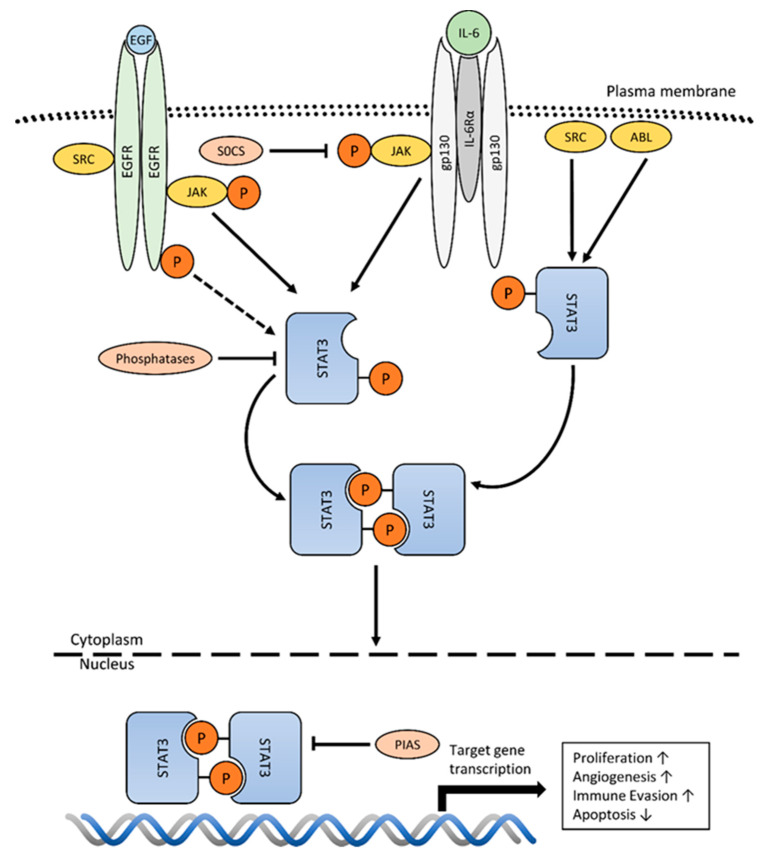Figure 1.
Mechanisms of STAT3 activation: Cytokine binding (e.g., IL-6) to its cognate receptor (e.g., gp130/IL-6Rα) induces receptor dimerization and activation of receptor associated Janus kinases (JAKs). Activated JAKs provide STAT3 receptor-docking sites by phosphorylation of cytoplasmic receptor tails (not shown). Subsequently STAT3 is activated by JAKs due to single tyrosine phosphorylation (Tyr705). Formed STAT3-dimers translocate into the nucleus and drive transcription of genes associated with the cancer hallmarks: proliferation, angiogenesis, immune evasion and evasion of apoptosis (middle). Receptors with intrinsic kinase activity (RTKs) like EGFR also facilitate STAT3 activation via JAK engagement rather than directly (left). STAT3 activation has also been reported by non-receptor tyrosine kinases (nRTKs) like SRC or ABL (right). Under physiological conditions, STAT3 activation is tightly controlled by phosphatases, SOCS and PIAS proteins.

